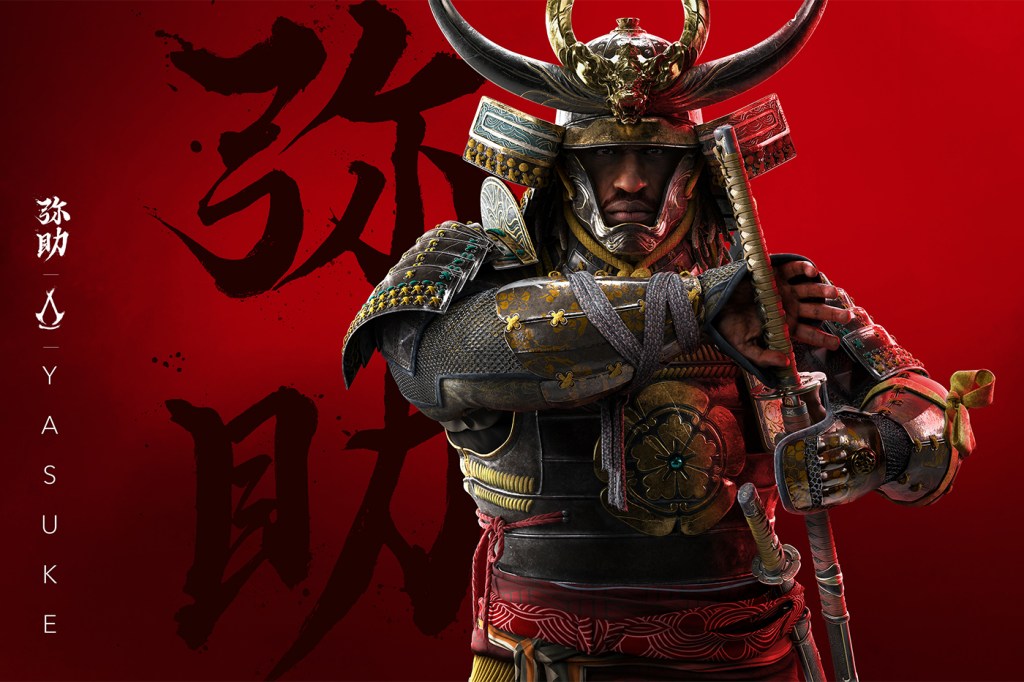Who is Yasuke, the real-life Black samurai at the center of the new video game ‘Assassin’s Creed Shadows’? Japanese history expert explains
Yasuke’s inclusion in the next entry in the blockbuster franchise has sparked controversy. But what is the reality behind the man who has become a legend?

The “Assassin’s Creed” series is known for bringing virtual action to real-world history, but the latest game in the long-running franchise, “Assassin’s Creed Shadows,” has sparked controversy.
One of two playable protagonists in “Shadows” is Yasuke, a real historical figure and African man who rose from his servitude to Portuguese Jesuits to become the first foreign samurai in Japan’s history. Yasuke’s story is full of drama and novelty, yet some “Assassin’s Creed” fans questioned Yasuke’s inclusion.
Some have criticized Ubisoft, the game’s developer, for not including a Japanese male protagonist (the game’s playable protagonist, Naoe, is a Japanese woman). Others have claimed Yasuke wasn’t a samurai. In turn, others have called out the critics for being racist, and Japanese historians have even weighed into the debate about whether Yasuke was actually a samurai as defined by 16th-century Japanese society.
All of the criticism comes back to one central question: Who was Yasuke? Was he, in fact, the first foreign samurai? And why has his story become so overrepresented in pop culture?
Yasuke’s story begins in the early 1580s, when a Black African man arrived in Japan in the servitude of Portuguese Jesuits, explains Michael Thornton, an assistant teaching professor of history at Northeastern University who specializes in Japanese history. Yasuke, who went by a different, unknown name prior to arriving in Japan, is the first African to appear in Japanese records.

“There weren’t a lot of Black or African people in Japan in the 1580s as you might imagine, so his presence in Japan certainly roused a lot of attention,” Thornton says.
Partly as a result of all that attention, Oda Nobunaga, a powerful feudal lord, or daimyō, who was trying to unify Japan after more than a century of civil war known as the Sengoku or Warring States Period, called for Yasuke to come before him.
“He summons the Jesuits, the Portuguese missionaries who had brought Yasuke to Japan, and says, ‘Show me this strange man that I’ve been hearing about,’” Thornton says. “He basically demands that Yasuke work for him. He doesn’t enslave Yasuke or anything like that. He basically asks him to serve him as one of his vassals.”
This is where the historical controversy comes in. Samurai were a kind of vassal, people who were bound to a lord legally and, in return, got certain privileges, including a sword and stipend. Yasuke had those privileges, Thornton says, but there is ambiguity about whether Yasuke’s vassalage amounted to the category of samurai. Some critics say the definition of a samurai was tied to one’s family and its relationship to the lord, both of which Yasuke didn’t have.
“To make this all more complicated, the 1580s are a time when the definition of a samurai is not even fixed within Japan,” Thornton adds. “Eventually, by the time we get to [the period of] ‘Shogun’ and a few years after that, there’s a very clear legal definition of what it means to be a samurai. Every family in Japan is categorized as either a samurai or something else, and there’s extensive census records and family registers.”
Regardless of how Yasuke would have been technically defined under the very fluid social norms of the time, Thornton says there is documentary evidence that he served Nobunaga and had privileges that are markers of a samurai.
“Being given a ‘stipend’ and serving Nobunaga closely fulfills the important requirements of a ‘contract between master and servant’” that defined a samurai, historian Yu Hirayama wrote in a post on X. Hirayama adds that it was also “common for a master to promote someone of low status to a ‘samurai.’” Given Yasuke’s outsider status, he would have had very little status in Japanese society without Nobunaga elevating his role.
Featured Posts
Yasuke served his lord until Nobunaga was assassinated in 1582 by one of his jealous vassals, Thornton says. In the aftermath of the assassination, Yasuke fled with Nobunaga’s son, but the assassins eventually caught up to them. What happened next was likely a shock to Yasuke.
“The assassins decided to spare Yasuke’s life,” Thornton says. “They say, ‘You’re not a Japanese person. We’re not going to force you to commit ritual suicide as we have done before with Nobunaga’s other supporters.’”
From there, Yasuke is given back to the Portuguese, who leave Japan with him in tow. At that point, historians lose track of him in the documentary record.
Despite how little is known of Yasuke, his story has inspired countless pop culture retellings. Given all the dramatic twists of fate set against the backdrop of one of the most pivotal periods in Japanese history, it’s not hard to see why. But Thornton explains the appeal of Yasuke’s story also comes down to how rare it was for foreigners to be integrated into Japanese society in the way Yasuke was.
However, Thornton points out it is a little misleading to say Yasuke was Japan’s first foreign samurai. At the time there were plenty of “families and warrior groups that become part of the samurai class [that] have roots that are not within this narrow part of the Japanese archipelago” due to long-standing connections between Japan, Korea and China.
“Yasuke could not pass as a Japanese person, whereas perhaps a lot of other people could have,” Thornton says.
Thornton adds that Yasuke’s story is also central to the long-standing connections between the Japanese political left and African American leaders that date all the way to W.E.B. Dubois in the mid-19th century. Japan currently has a reputation for being homogenous and xenophobic, Thornton says, but Yasuke’s story and its historical echoes prove Japan’s relationship with race is more complicated.
“Japan, despite having this reputation for being totally homogenous and xenophobic, has long been thinking about the outside world, sometimes in more positive ways and sometimes not,” Thornton says. “It’s interesting to recognize that at different points in history the framing that gets put on this story and the way this story becomes a stand in for broader social and cultural anxieties, that’s not a new thing.”










